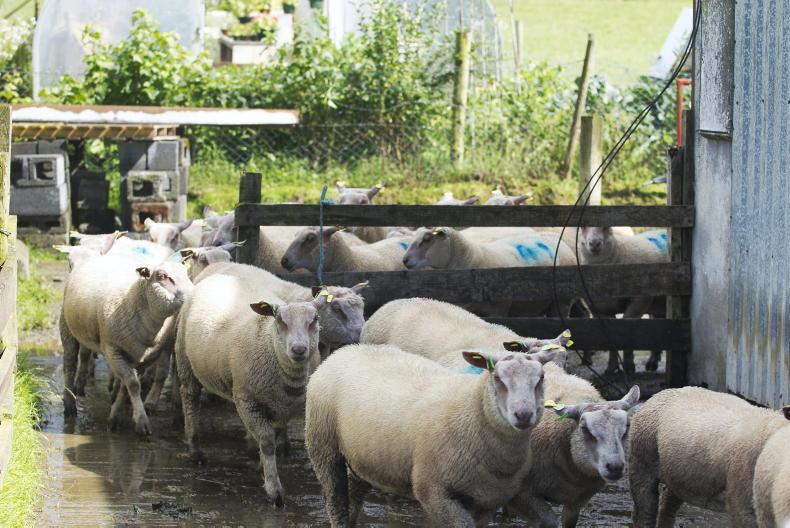Review and put a plan in place
No two years are the same when it comes to putting a plan in place for dosing sheep. It is worthwhile reviewing what programme is in place and questioning if it can be changed to make it better.
Do you know if anthelmintic resistance is an issue in your flock? Are you encountering lamb performance issues as the season progresses? Are you making use of faecal egg counts to determine the need to treat sheep? Are you alternating between active ingredients?
These questions should all be included in your review.
Nematodirus only requires a white drench
The highest risk period for nematodirus will soon have passed for midseason flocks lambing in early to mid-March. Be conscious however that later-lambing flocks will still be at risk, and that younger lambs in earlier-lambing flocks are not out of the woods either.
There is no treatment offering residual protection against nematodirus, meaning animals can also be re-infected, so keep on guard for clinical symptoms including lambs with a green-coloured scour, lamb performance quickly suffering and dehydration due to diarrhoea.
A there is no residual activity available, there is no merit in selecting any other product outside of a white drench (benzimidazole); doing so will only increase the rate of resistance developing to other anthelmintic classes.
Confusion with coccidiosis
Coccidiosis and nematodirus often give rise to misdiagnosis of the ailment present due to similar symptoms. Cocciodiosis also causes profuse diarrhoea in lambs, but in contrast to nematodirus, the scour present is a dark black or grey colour due to blood in the faeces. Lamb performance will also suffer rapidly and, in serious cases, lambs will be straining and forcing, giving rise on occasion to rectal expulsion.
Coccidiosis and nematodirus infection can be present at the same time and this increases the importance of dealing with issues promptly.
Treatment for coccidiosis involves administering a coccidiostat. There are numerous products on the market.
Liver fluke may still be an issue
Regional veterinary laboratories and vets are still reporting cases of mortality caused by liver fluke. The mild winter has given rise to a higher presence of liver fluke parasites, leading to issues persisting beyond the normal high-risk period.
Cases of mortality should be investigated and farms with a history of problems should be wary of the threat.
Make use of all available information
When it comes to dosing sheep for worms, the optimum procedure is treating animals on the back of a demonstrated need. Treating lambs on the basis of dirty tail ends is not accurate, as research has shown lambs can have dirty tail ends without having a worm burden, while clean lambs can be harbouring a high worm burden.
Faecal egg samples can be used successfully to determine the need to treat animals and are a valuable tool to cut out labour and unnecessary expenditure where there is no worm burden.
Faecal samples can be collected with ease and analysed at a cost ranging anywhere from €15 to €30 per sample.
At a minimum, faecal egg counts should be the go to practice post-weaning, with added benefits the earlier you start testing.
Test for resistance
The level of resistance identified in recent years against the commonly used anthelmintic classes of benzimidazoles/1-BZ (white drenches), levamisoles/2-LV (yellow drench) and macrocyclic lactones/3-ML (clear drench) is hugely worrying, with a significant number of flocks having resistance to all three classes.
It is vital that suspected cases of resistance are followed up on. The Department of Agriculture’s Parasite Control Strategy for sheep and cattle farmers offers an ideal way to explore such issues. Under the initiative, funding provided by the Targeted Advisory Service for Animal Health (TASAH) will provide for a free farm visit and veterinary consultation to advise on parasite control, including faecal egg sampling and interpretation.
Farmers can register online or speak to their own vet to join the programme, which will run until 31 December 2022.
Consider the potential risk
Experience in recent years has shown us that weather can have a big bearing on the worm burden in the environment. Prolonged periods of dry weather reduce the risk, while rainfall in the wake of such a period can bring about a rapid increase in the worm challenge. Such circumstances should be kept in mind.
Farmers in the southeast in particular should be aware of a relatively new and limited risk, haemonchus contortus, commonly known as barber’s pole worm.
Lactating hoggets may require treatment
Yearling hoggets rearing lambs will be under greater nutritional stress, with this delaying the development of their natural immunity against worms. Faecal egg counts should be used to determine the need to treat animals, particularly as the season progresses, as these sheep can quickly develop immunity.
Deliver the correct volume
A significant contributor to resistance developing is animals receiving an inadequate volume of product. Animals should be dosed to the heaviest animal in the batch, and it is good practice to weigh lambs to get a good estimate of weight. Take care to ensure the dose is delivered correctly and dosing gun injuries are avoided, especially in young lambs.
Dosing equipment should also be calibrated regularly, as should weighing scales, to ensure the correct volume is being administered.
Quarantine treat purchased stock
Any new sheep arriving on the farm, be it ewes with lambs at foot, hoggets, store lambs or rams can bring resistant worms with them. Also, be aware of sheep returning from temporary grazing.
Quarantine drench such sheep with one of the following; Group 4-AD and either Group 2-LV or Group 3-ML, or Group 5-SI and Group 2-LV.






 This is a subscriber-only article
This is a subscriber-only article











SHARING OPTIONS: